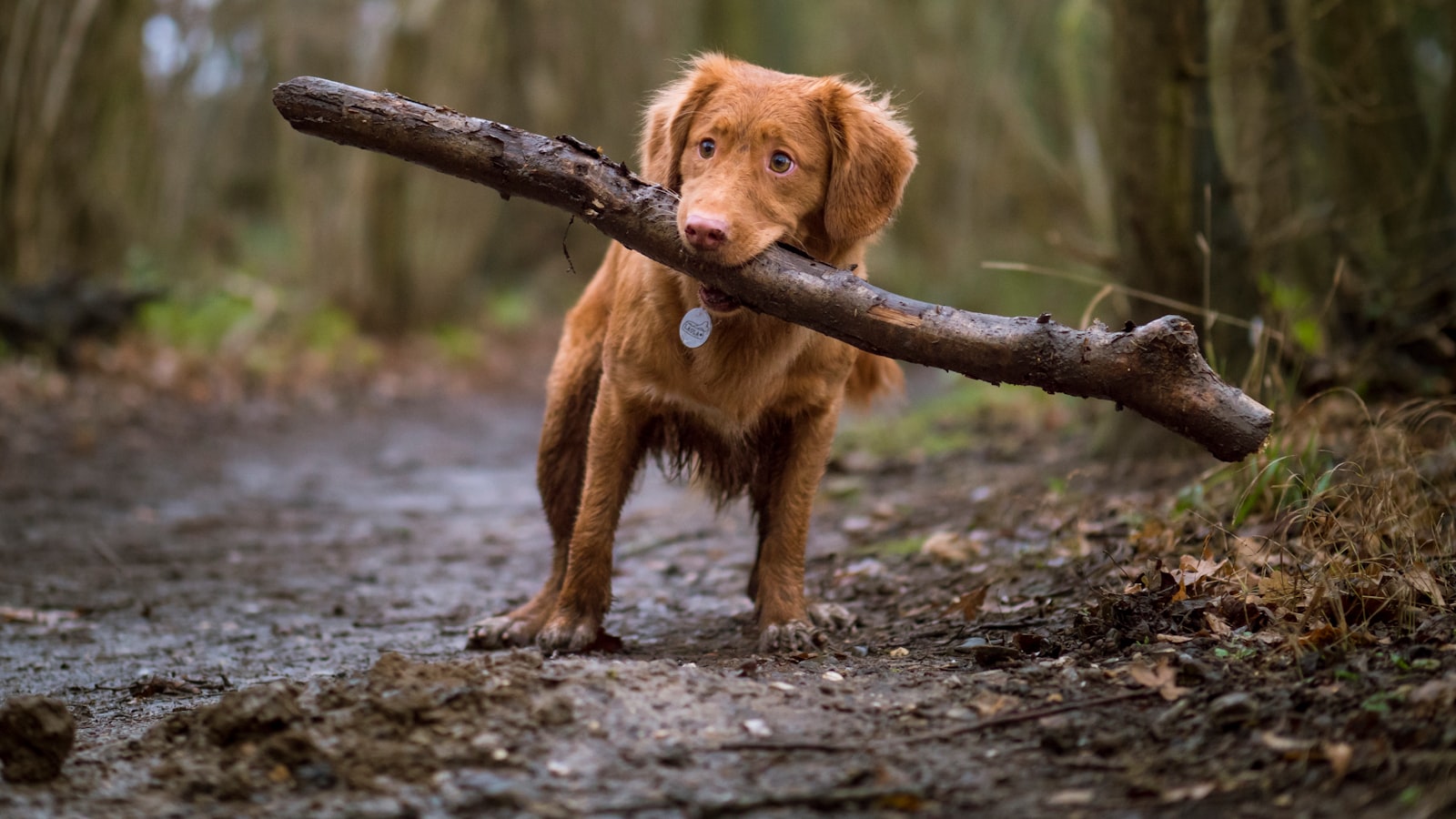Having a secure and escape-proof dog crate is essential for the safety of your furry friend. Whether you’re leaving your dog alone for a few hours or traveling with them, ensuring that they cannot break free from their crate is crucial. In this guide, we will provide you with some effective tips on how to make a dog crate escape proof.
Key takeaways for How to make a dog crate escape proof:
1. Choose the right size crate: Ensure that the crate is appropriately sized for your dog. It should be big enough for them to stand, lie down, and turn around comfortably, but not too big to allow them to roam freely.
2. Use a secure door latch: Check the door latch on the crate to make sure it is sturdy and secure. Some crates have double locks or metal latches that are harder for dogs to unlock.
3. Reinforce weak spots: Examine the crate for any weak points that your dog might exploit. If there are areas where the bars are loose or any other structural issues, reinforce them with zip ties or metal fasteners.
4. Eliminate escape aids: Remove any objects inside or near the crate that your dog could use to aid their escape. This includes bedding, toys with long strings, or anything they can reach through the bars.
5. Consider a heavy-duty crate: If you have a determined escape artist, investing in a heavy-duty or escape-proof crate might be worth it. These crates are often made of strong materials like reinforced steel and have additional security features.
6. Distract with mental stimulation: Keep your dog mentally stimulated to reduce their desire to escape. Provide puzzle toys, chew treats, and other engaging activities that will help keep their mind occupied while inside the crate.
7. Gradual desensitization: Help your dog develop positive associations with their crate by gradually building up their tolerance over time. Start with short periods and gradually increase the duration so that they don’t associate the crate with being confined against their will.
8. Seek professional guidance if needed: If your dog continues to escape despite your efforts, consult a professional dog trainer or behaviorist for further assistance. They can provide tailored advice and techniques specific to your dog’s needs.
9. Monitor behavior: Regularly monitor your dog’s behavior while in the crate to ensure they aren’t showing signs of anxiety or distress. If they become extremely anxious, seek professional help to address their separation anxiety or crate aversion.
10. Use positive reinforcement: Reward your dog for calm behavior while in the crate. Offer treats, praise, and affection when they settle down and remain calm, reinforcing the idea that being in the crate can be a positive experience.
Why Dogs Escape Crates
Apprehending Canine Escapes: The Behavioral Perspective
“Dogs, much like humans, have intrinsic instincts and behaviors that defer from individual to individual,” shares Dr. Ryan James, a celebrated animal behaviorist. It’s not uncommon for our furry friends to seek escape routes when confined within a crate or an enclosed space. They’re naturally curious and energetic creatures, which can sometimes drive their urges to explore beyond the bars.
Understandably so, these attempts are not random acts of mischief but can be behavioral outcomes tied to various concerns— anxiety/fear being a prime one. Dogs often associate crates with predicaments—abandonment, solitude, etc., leading to heightened anxiety levels compelling them to find an out. “When dogs are fearful or anxious, their fight-or-flight response kicks in,” explains Dr. James.
Now let’s move onto another crucial aspect needing light- termed ‘boredom’ or lack of mental stimulation. You may wonder how boredom would influence crate escapes? Well, dogs thrive on physical exercise and mental stimulation—be it exploring their surroundings or problem-solving tasks. Boredom tends to strip them off this engagement making the escape a desirable feat; after all, freedom does mean unlimited adventure!
Last but certainly not least is the dimension of ‘insufficient training or conditioning.’ Dogs do not inherently view crates as safe havens unless conditioned otherwise—it requires a fair amount of training supported by positive reinforcements. Without adequate conditioning strategies, dogs may feel compelled to escape as a means-end technique for evasion.
understanding why dogs attempt crate escapes is pivotal for prospective corrections. We must remember—they are not trying to ’cause trouble,’ they’re merely responding in their own canine way!
As we delve deeper into each pathway mentioned above, you’ll garner richer insights into these fascinating creatures and be better equipped to meet their needs and manage their behaviors effectively. Stay tuned for more insightful discussions ahead!
Choosing an Escape-Proof Dog Crate
In the world of dog parenting, choosing the right crate size and type is crucial. A crate is not just an enclosure; it’s an intimate space for your furry friend, almost like their own little room. When deciding on a crate’s size, your dog’s breed and size are major determinants. Large breeds such as Great Danes or Saint Bernards would naturally need bigger crates than smaller breeds like a Pekingese or a Shih Tzu. Moreover, the crate must also accommodate your pet’s individual needs – whether they like to stretch out or curl up can affect the size you choose.

Just as we prefer homes built with sturdiness and durability in mind, the same criteria apply when selecting a crate for your pet. Using robust construction materials will ensure that the structure withstands even the most ardent attempts from your pet to escape its confines. It ensures longevity, giving you more bang for your buck.

Security is paramount in any dwelling, and this extends to your dog’s crate as well. Various locking mechanisms are available in modern animal houses—double latches, security pins, magnetic locks—the choices are many and varied. These mechanisms ensure that the door remains secure and difficult for dogs to manipulate, simultaneously providing their necessary confinement and peace of mind to you as an owner.

Remember: making these selections requires informed decision-making rather than whimsy. Your canine companion deserves comfort and safety in equal measure. Letting them enjoy a well-sized, sturdy, secure home base is undoubtedly one way of expressing our profound love for them.
Reinforcing Crate Training
“Crate Training: A Step-by-Step Guide for a Happy Pooch at Home”
Building positive associations with the crate is much more than just popping your dog inside and hoping for the best. It involves an intricate process of gradually introducing your canine companion to their new den in a way that feels safe, comforting and rewarding. This begins with placing enticing items like special treats, favorite toys, or even their meals inside the crate (avoid forcing them in). The goal here is to make the crate appear as attractive as possible. When they enter willingly and explore with curiosity, it’s vital to reinforce this behavior with praise.

Gradual exposure and carefully increased durations of crating are also pivotal aspects of effective crate training. Begin by only crating your dog for short intervals—say 10-15 minutes at a time. Gradually extend these periods over subsequent days and weeks. Remember, patience is key! Patience blended with consistent gentle reinforcement will help your dog feel secure, paving a foundational understanding that the crate is a good place.
A dog’s crate isn’t meant to be a boring prison cell—it can also serve as an interactive play zone! Enhance this outlook by offering mental stimulation through engaging toys or puzzle feeders during crate time. Always ensure toys are safe, durable and suitable for their size and demeanor.
While techniques may vary depending on each individual pooch, maintaining these crucial elements in mind can greatly contribute towards making their crate experience positive.”
Remember: Patience packs ‘Paws-itivity’, enjoy this beautiful journey alongside your loyal friend!”
Addressing Anxiety or Fear-Related Escape Attempts
Imagine your own secret haven, where senses are softly lulled into a state of serenity. Creating a similar calming ambiance for your dog isn’t as mystical as it might sound. Consider incorporating comforting scents into the environment; lavender, for example, is renowned for its calming properties and is non-toxic for dogs. Also, background noise such as a soft radio murmur or ambient sounds can offer auditory distraction from stressful silence or exterior noise pollution.
Mastering Desensitization Techniques
Fear isn’t an enemy; it’s just misunderstood. Guiding your dog through their fear may take patience, but employing desensitization techniques will be worth every moment to stop anxiety-driven escape attempts. One such technique involves exposure therapy wherein you introduce anxiety triggers slowly, gradually increasing the frequency until the fear subsides. Pheromone diffusers, crate covers, and other pet-specific products might help in easing these transitions.

Seeking Professional Consultation
Sometimes even superhuman efforts can’t penetrate the wall of severe anxiety that some dogs face. That doesn’t mean there’s no hope; this is where professional intervention comes in handy. Reputable dog trainers and behaviorists have been specifically equipped with knowledge tools to understand and resolve complex canine anxieties linked with crate behaviors and escape attempts.

Remember, there’s strength in seeking help – it’s the gateway to ensuring our furry friends lead a balanced, contented life!
Physical Modifications for an Escape-Proof Crate
As pet parents, the security of our four-legged family members takes supreme importance. One area that often requires attention is their crate. How do we make it indestructible yet comfortable? A solution at hand involves reinforcing the crate panels with additional materials such as steel mesh or plywood. But why would we need this reinforcement?
Consider this: Fido has a knack for chewing. What starts as an innocent nibble slowly turns into an all-out demolition job on the wooden crate you so carefully picked out. Reinforced panels present a more formidable challenge to persistent chewers like Fido, making it significantly more difficult for him to gnaw his way through.

Better Door Locks: Secure yet User-friendly
The doorway to freedom is often simpler than one might imagine—especially for those canine Houdinis who have mastered unlocking mechanisms! Here’s where fortified door locks come in handy. Additional locks or even padlocks can help secure the crate from these clever escape artists. Yet, we want to balance security while ensuring ease of use for humans too. Remember, there’s no virtue in juggling with complicated locking systems during an emergency.

Anti-chew sprays and Taste Deterrents: When charm fails
Let’s be honest: some dogs are just persistent. No reinforcement or lock will deter them from gnawing at their crates when they set their minds on it. Enter anti-chew sprays and taste deterrents—they make the crate taste unpleasant, thereby discouraging any attempts at chewing and escape.
While these products usually contain non-toxic substances, always cross-check if they’re safe for your dog before using them.

All said and done, taking proactive steps can mean a world of difference in ensuring your canine buddy’s safety—not to mention saving you from unnecessary worry and costly repairs!
Supervised Training and Monitoring
“Crating your pup doesn’t mean you’ve suddenly gained a hands-off ticket to Easy Dogtown. Quite the contrary! It’s critical that Fido’s crate time is properly supervised — let’s delve into why that matters.
Dogs, like us humans, crave attention and yearn for companionship. Confinement within the crate, no matter how cozy we try to make it, can trigger unwanted anxiety if not managed carefully. Picture this: your furry friend finds himself in a foreign environment (however cushy) and decides he’d rather be anywhere else but there! Panic ensues, an escape attempt might follow, and before you know it, Rover has hurt himself in the process. “Better supervision,” our unfortunate episode softly hints, “might have averted the crisis.”
You’re probably thinking – Should I quit my job to babysit my dog all day during crate training? While your commitment is commendable, we wouldn’t recommend such drastic measures (we doubt your boss would either!). Instead, let technology lend a paw!
Remote monitoring systems are inventive solutions designed precisely to address such situations. These systems use cameras or mobile applications that allow owners to monitor their four-legged friends from afar. So even when you’re not physically present at home, you’re virtually there!
Just imagine this scene: Owing to work commitments, you had to step out for a couple of hours. Meanwhile at home, Daisy gets restless in her crate. An escape attempt could jeopardize her safety! But worry not; with a remote monitoring system handy at work, you manage to spot Daisy’s distress signals almost right away! A quick call uncles neighbor next door and Daisy’s situation is put under control swiftly.
In essence, while crates serve as secure sanctuaries for our canine compatriots when needed, they demand active watchfulness from pet parents too. Proper surveillance not only ensures their safety but also reassures them of your presence even when out of sight!”
In Conclusion
In wrapping up our discussion on making a dog crate escape-proof, we revisit the critical strategies we’ve detailed.
Firstly, let’s emphasize the construction and fortification of the crate. A sturdy, well-constructed box is the first step to an inescapable fortress. Reinforce weak spots like latches and corners with additional secure materials and regularly check for wear and tear.
Secondly, remember that an escape-proof crate is not built overnight; it takes time, consistency, and understanding of your furry friend’s behavior. Behavior modification techniques such as reward-based training can help calm anxiety-induced escapism.
Lastly, we’d like to draw attention back to the heart of this endeavour – providing a safe space for your beloved pet. Anxiety in dogs often stems from feeling unsafe or insecure. An escape-proof crate echoes safety to your canine family member while offering you peace of mind.

Tailoring an escape-proof dog crate requires dedication and adaptability on your part so your four-legged companion recognizes their crate as a refuge rather than a punishment area. Remember – clear communication, consistent training, safety focus – these are the building blocks of creating that impenetrable fortress of comfort!